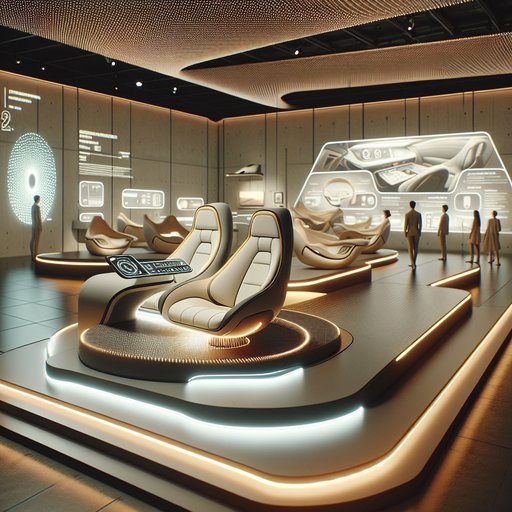
Biometric monitoring, climate personalization, and adaptive seating—once the vocabulary of auto suppliers—are now being shaped in galleries and design schools, where artists and curators probe how these systems feel, look, and behave. This month, museum programs and festival installations are inviting audiences to test responsive cabins, giving collectors and automakers a shared preview of near-future interiors. The work reframes dashboards as instruments and seats as living sculptures, with curators foregrounding consent, comfort, and cultural context alongside engineering. As commissions and open calls accelerate into the fall season, the art world is becoming a crucial mediator between technical possibility and humane experience inside vehicles.
Biometric monitoring is being visualized with unusual clarity through artists who have long worked with pulse, breath, and gaze. Rafael Lozano-Hemmer’s interactive pulse pieces, frequently shown at major institutions, anchor curatorial discussions about what a car should sense and when. Designers collaborating with automakers are translating those insights into cabin prototypes where heart-rate and posture are treated as opt-in creative inputs, not surveillance. Curators report that audience behavior during these installations—lingering, opting out, or changing modes—offers immediate, qualitative data for design teams attending walk-throughs this month.
Climate personalization has moved from engineering labs into olfactory and light-based artworks that model microclimates. Projects influenced by Sissel Tolaas’s smell research and Anicka Yi’s floating ecosystems are guiding how interiors might tune airflow, scent, and humidity to individual comfort without overwhelming fellow passengers. Museum educators are using these rooms to unpack the ethics of “comfort for whom,” balancing accessibility with luxury. The immediate impact is a richer design brief: climate systems as cultural interfaces, not just thermostats.
Adaptive seating is emerging as sculptural research, with shape-changing textiles and soft robotics coming out of studios and universities. Work from morphing-matter labs and computational design practices, alongside limited-edition chairs by designers such as Joris Laarman, is informing how bolsters, cushions, and headrests can reconfigure responsively. Curators emphasize repairability and longevity, pushing against disposable gadgetry in favor of modular cushions and visible mechanisms. Collectors are commissioning prototypes that double as functional artworks, giving fabricators runway to test upholstery, kinematics, and materials destined for concept cabins.
Institutions from design museums to automotive collections are brokering these crossovers through residencies, open studios, and juried showcases this season. Programs tied to major fairs and awards are prioritizing works that can be sat in, sensed, and critiqued by the public, producing feedback that lands on engineers’ desks within weeks. Curators and conservators are drafting acquisition guidelines for responsive interiors, including data stewardship plans and maintenance protocols. For audiences, the payoff is immediate: a chance to experience the next wave of in-cabin intelligence as culture first—artifacts to be debated—before it becomes default in the showroom.












